Remember those times you'd run into the shoe store as a kid, excited to try on all the shiny, cool shoes on the shelves? You'd open three or four boxes and try them all on, desperately trying to convince your parents to buy them for you.
Even if the shoes weren't a good fit, you didn’t want to worry about struggling with that whole process. You just wanted to walk out of the store with a super cool pair of new shoes to show off to your friends at school.
Whether or not this sounds familiar to you, the idea of trying on shoes and struggling to find the right size almost certainly is. Even though our foot sizes don’t change much as adults, there's still the struggle of finding the right fit.It may feel like a losing battle at times, especially with different brand sizing, changing style trends, and uncomfortable fabrics. However, at Kizik, our experts are here to help!
We've got experience in the world of footwear, and every one of our shoes is built to help you get the most comfortable, practical, long-lasting fit possible. In today's guide, we're going to break down what defines a perfect fit and how you can most easily find the one for you.
But first, how do you know your actual shoe size?
Before we get into what makes the perfect fit, let’s chat about something important—making sure you actually know your shoe size. Sounds obvious, right?
But a shocking number of people are walking around in shoes that are too big, too small, too narrow, or just plain wrong for their feet. And since foot size can change over time, relying on what you wore five years ago (or even last year) might not be doing you any favors.
Here’s how to get an accurate measurement at home:
-
Measure at the end of the day. Feet tend to swell as the day goes on, so measuring them in the evening gives you the most accurate size.
-
Stand up for the best reading. Your foot expands when you put weight on it, so measure while standing for the truest length and width.
-
Use the paper trick. Place a sheet of paper on the floor against a wall, stand on it with your heel touching the wall, and trace around your foot. Measure from the longest toe to the heel.
-
Check both feet. Most people have one foot slightly bigger than the other—always go with the larger size when picking shoes.
-
Don’t ignore width. If your shoes always feel tight on the sides, you might need a wider fit. Many brands offer different width options, so check before buying.
Once you’ve got your actual measurements, finding the right fit becomes a whole lot easier.
The phases of fit
Got your shoe size? Great! Now, to really understand what makes a perfect fit, it's best to look at shoe fit in stages. From the moment you put on your shoe to two hours later, and even two years later, different aspects of your shoe will contribute to whether or not they fit well.
The trying-on phase
The very first phase where fit matters is the trying-on phase, when you first put on the shoe.
Have you ever struggled so much to put on a shoe that you almost gave up on it, only to finally get it on and realize it's actually an excellent fit otherwise? This experience isn't uncommon, and it's typically due to poor design.
If your foot hurts when putting on your shoes, it could be because the shoe's heel is too rigid and stiff, or it could be that the opening is too small for your foot.
Forcing your foot into such shoes can hurt both your fingers and your heels, especially if your feet or hands are sensitive.
At Kizik, our HandsFree Labs® technology solves all the problems of putting on and taking off shoes. Our patented technology provides an easy slip-on and slip-off experience that hugs your heel for lasting comfort and that stays on your foot. A pair of Kiziks might just change your life, especially if you have kids.
How to tell if your shoes actually fit
We talked about the trying-on phase and how tricky it can be just to get shoes on your feet, but what about once they’re on? That’s when the real test begins.
Consider these signs of poor fit:
-
Toes hitting the front: If your toes are constantly touching the tip of your shoes, they’re too small. This can lead to discomfort, bruising, and long-term foot issues.
-
Heel slipping out: If your heel lifts every time you take a step, your shoes are too big or not designed for your foot shape. This can cause blisters and instability.
-
Tight across the sides: Shoes that pinch or squeeze your foot—especially in the widest part—are too narrow, leading to discomfort and circulation issues.
-
Too much space: If your foot slides around inside the shoe, it’s too big. This lack of stability can cause friction, blisters, and awkward movement.
-
Pressure points: Any areas where the shoe digs in or rubs uncomfortably will only get worse over time. A good fit should feel secure but not restrictive.
-
Lack of flexibility: If the sole doesn’t bend where your foot naturally flexes, walking will feel awkward and stiff.
-
Arch misalignment: If the arch support doesn’t match where your foot needs it, you could experience discomfort or pain, especially after long wear.
-
Instant discomfort: If a shoe doesn’t feel right from the start, don’t count on a "break-in" period. A well-fitting shoe should feel good the moment you put it on.
General wear
The phase most of us think about when it comes to the fit of shoes is the general wear phase. This is the nitty gritty, everyday grind that your shoes go through.
Unfortunately, it's not easy to tell exactly how a shoe will feel during this time when you’re trying them on. Sometimes you won't notice that your shoe is too tight around the toes, too narrow near the bridge, or too loose at the heel, at least not until a few thousand steps of wear later.
One of the specific ways that shoes might not fit well during the general wear phase is if there is not enough space around your toes. Do your toes push up against the end of your shoe a lot? This could be a problem both for your foot comfort and for the lifetime of your shoes.
Without plenty of toe room, your shoes will go through extra wear and tear in a shorter period of time. With poor fit, there’s also the potential for holes along the seams of certain shoes, especially low-quality ones.
In fact, extra pressure on any part of your foot can wear out your shoes more quickly and cause discomfort over time. This can be compounded the longer you wear your shoes each day and the more active you are in them.
Active lifestyle wear
If you're living an active lifestyle, the perfect fit is even more critical. Perhaps your day takes you from the gym to a long commute to work, where you'll do a few thousand steps within an hour. After work, more commuting, errands, social events, chores at home, or time to relax outdoors can spell even more stress on your feet.
If your shoes don't fit, an already challenging day like this is almost guaranteed to be miserable and exhausting. Few things can ruin your mood faster than foot pain and other discomforts like back pain that tend to follow it.
On the other hand, super comfortable shoes can give you one less thing to worry about and even be a bright spot in an otherwise tough, busy schedule. With our Rabbit Foam™ outsoles, your feet will be ridiculously comfortable all day long, so you don’t have to worry about sore feet ruining your day.
Lifetime
It's essential to keep long-term factors in mind when shopping for footwear unless you plan on overhauling your shoe closet every season.
Thankfully, we don't have to worry about our shoe size changing much as adults, at least compared to the change every few months or even weeks that we experienced as growing kids. This may be a welcome grace to our budgets, but it's not the only factor that could affect shoe fit over the long term.
Durability is also a vital part of finding the right fit.
For example, while a shoe may fit well at first, if the material and build aren’t durable, the shoe could lose its shape and become too loose to be comfortable. Alternatively, a snug fit with padding might be comfortable for a time, but if and when the padding wears out, the shoe could feel more like a pokey straight jacket.
It's impossible to promise a certain lifespan for any shoe, due to the vast range of factors involved. However, ensuring you choose only high-quality materials and buy thoughtfully designed shoes that are built to last is essential. Cheap materials are a sure sign that shoes won't last.
Intended uses can influence fit
The intended use of the shoe is important when it comes to fit and durability as well. Just because a pair of dress shoes fits well enough for the office doesn't mean they’re going to feel comfortable on a long commute or walk in the park. This may seem obvious, but the more you wear shoes outside of their intended use cases, the more they wear down and lose their perfect fit.
Thankfully, athleisure shoes like our styles here at Kizik are designed to be super versatile. They're perfect for commutes, light workouts, errands, walks in the park, nights on the town, days in the office, and even wearing around the house.
Can you fix a poor fit?
While we talked about the many different phases of finding the perfect fit, you might be wondering—what if your shoes don’t quite hit the mark? Do you have to ditch them entirely, or is there a way to make them work? The good news is that some fit issues can be fixed with a little creativity.
Here are a few DIY shoe adjustments that can help:
-
Too tight? Stretch it out. If your shoes feel a little snug, there are ways to loosen them up. Try wearing thick socks and using a hairdryer to gently heat the tight areas—this can help the material expand. For leather or suede shoes, a shoe stretcher can also work wonders.
-
Slipping at the heel? Add some grip. If your heels keep slipping out, heel grips or padded inserts can help lock your foot in place. No more awkward shuffle-walking to keep your shoes on.
-
Not enough arch support? Swap out the insoles. Some shoes don’t come with great built-in support, but that doesn’t mean you’re stuck with it. Adding high-quality insoles can make a world of difference, especially if you’re on your feet all day.
-
Pinching at the toes? Give yourself some breathing room. If your toe box feels cramped, a shoe stretcher designed for width can help create more space. You can also try freezing a bag of water inside your shoes—sounds weird, but as the water expands, so will your shoes.
While these tricks can help in a pinch, they won’t work for every shoe. If you’re constantly dealing with discomfort, it might be time to invest in a pair designed with a proper fit in mind.
Final remarks
If you're looking for everyday, perfect-fit shoes, look no further than our Lima, Athens, and Prague shoes!
With our HandsFree Labs® Technology, supportive cushioning, and plenty of other innovative features, our shoes are built to make finding the perfect fit and keeping it for years to come easier than ever.
For answers to footwear FAQs and more, stay tuned right here at our blog.
Sources:
Why are my feet so sensitive? | Randell's Footcare
Average Steps per Day by Age, Sex, and Occupation | Medical News Today
Foot Pain in Arches, Ball, Heel, Toe, and Ankle Problems - Non-Injury Causes and Treatments | Web MD


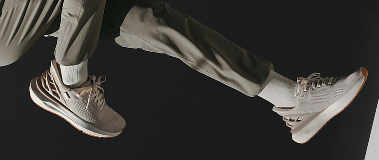

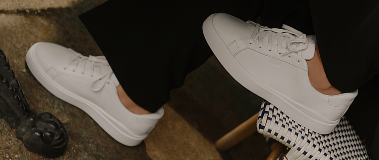
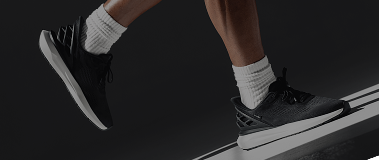
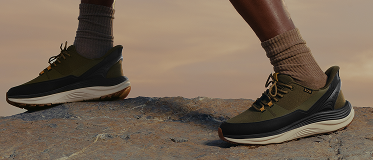
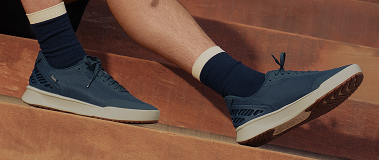


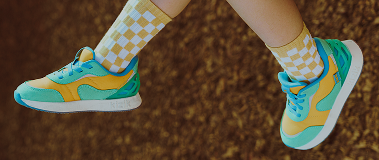

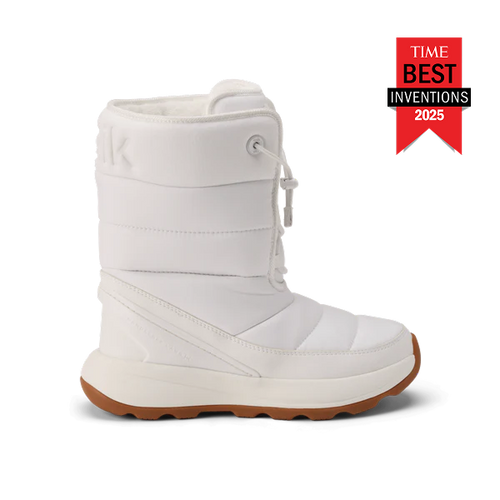



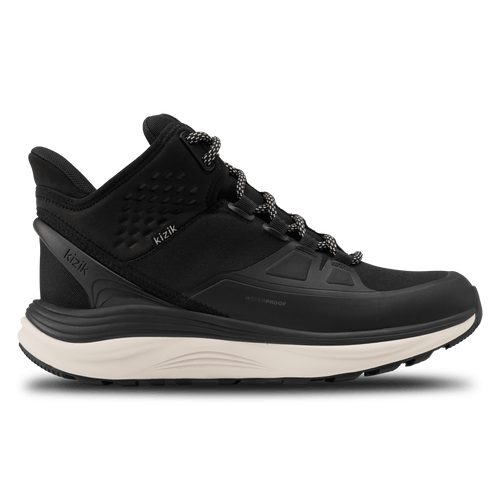













Leave a comment
This site is protected by hCaptcha and the hCaptcha Privacy Policy and Terms of Service apply.